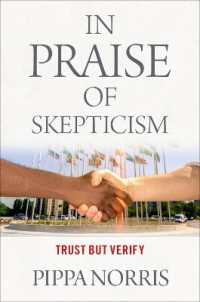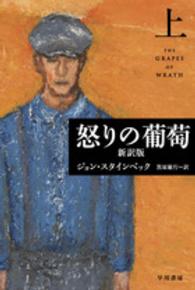Full Description
A subversive novel from 1710 that questioned political and aesthetic ideologies in eighteenth-century France.
This novel reflects a shift in French values at the turn of the eighteenth century, which saw increased interest in the private lives of the aristocracy and the pre-Enlightenment questioning of political and religious orthodoxies. Novels of fiction and leisure gained popularity, and it was during this time that Henriette-Julie de Castelnau, the Countess de Murat, published her second leisure novel, The Sprites of Kernosy Castle. Combining humor, social satire, and a proto-feminist outlook, Murat crafts a well-constructed plot where the supernatural is debunked. Murat's career was cut short when a series of "misdemeanors" related to the countess's homosexual tendencies led to her arrest in 1702. Sprites, which was released during a partial reprieve from prison, is the final published work of this independent-minded early feminist author.
Contents
Acknowledgments
Illustrations
Introduction
The Other Voice
Early Life and Works
Murat and the Development of the Literary Fairy Tale
Scandal and Exile
Murat and the Art of the Leisure Novel
A Female Quixote
Theatrical Life in 1700
Reception and Revision
Conclusion
A Note on the Translation
The Sprites of Kernosy Castle, by Henriette-Julie de Castelnau,
Countess de Murat (1710)
Part One
The Story of Madame de Briance
The Story of Zariades
Part Two
Continuation of the Story of Madame de Briance
The Story of the Count de Tourmeil
Bearskin, by Marie-Madeleine de Lubert (addition to the 1753 edition of Sprites)
Etoilette, by Marie-Madeleine de Lubert (addition to the 1753 edition of Sprites)
Bibliography
Index








